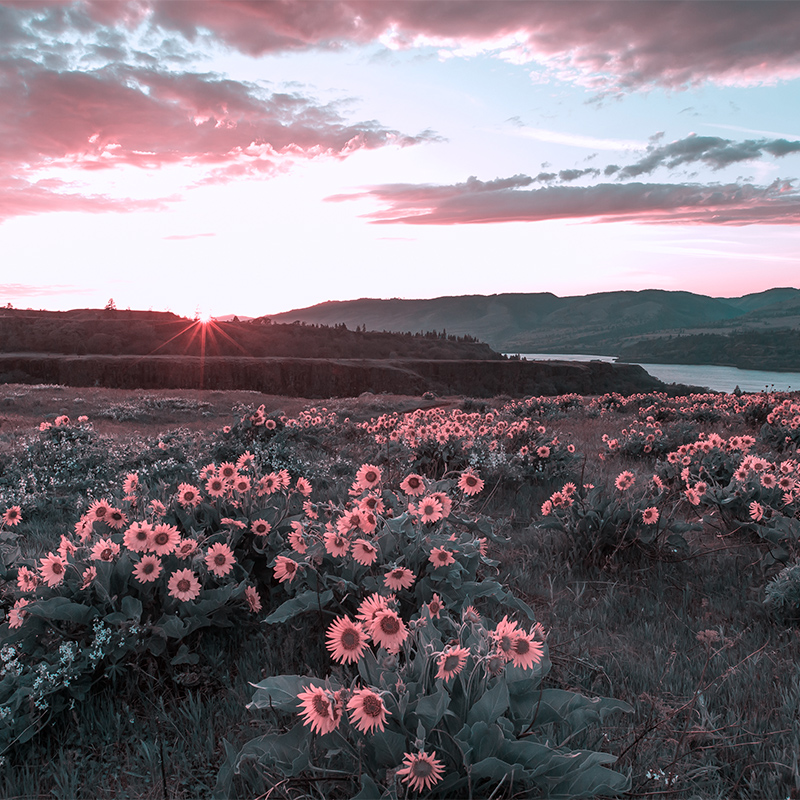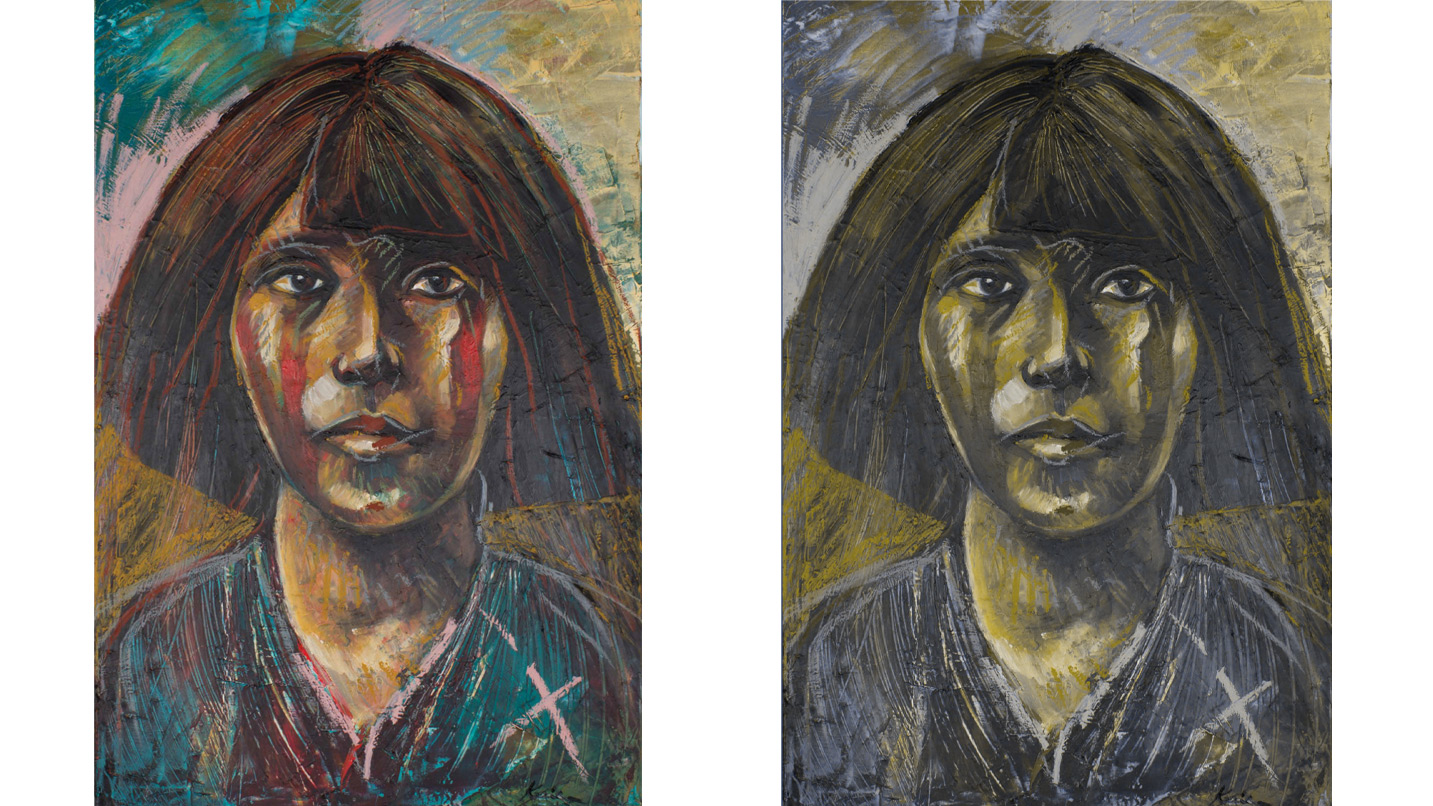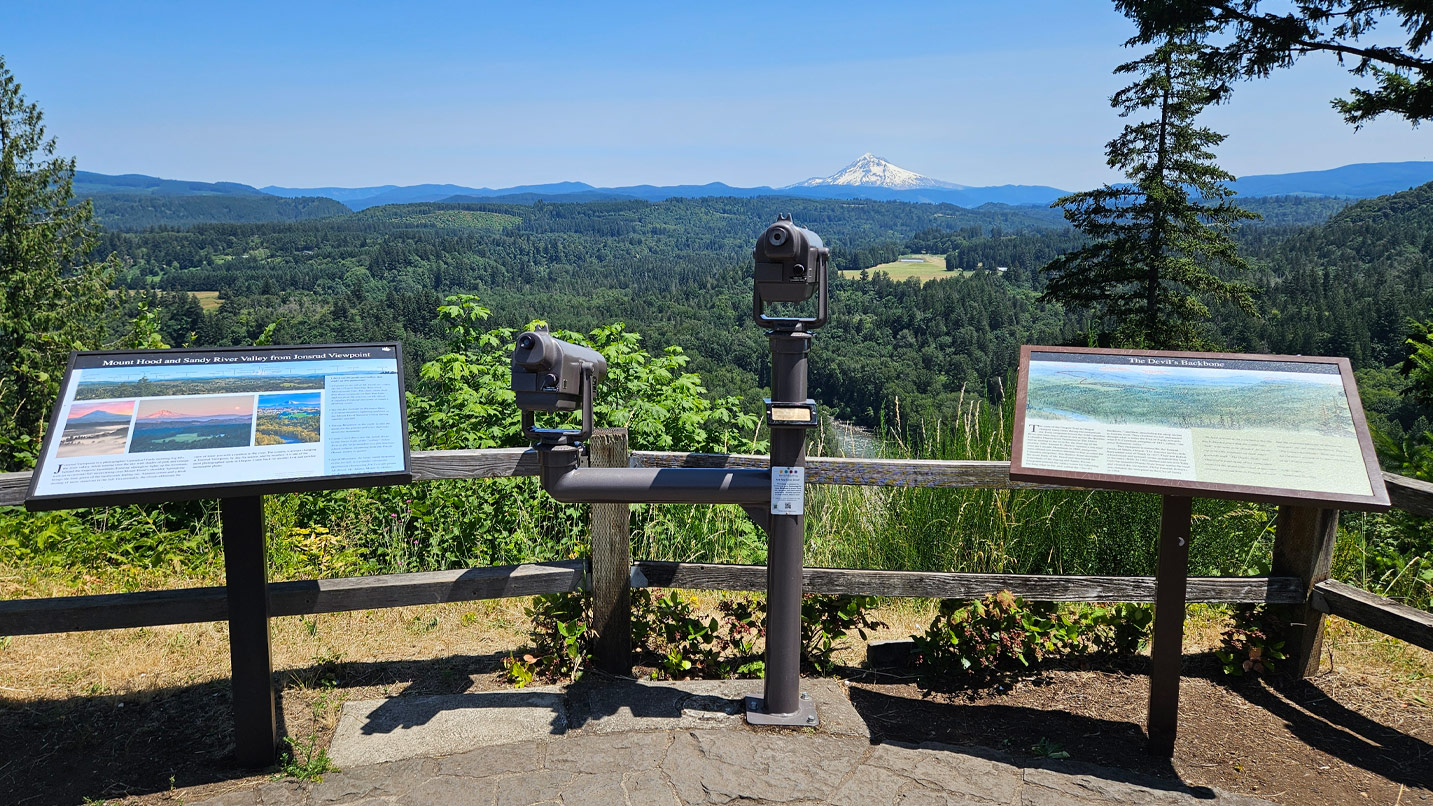The first time I saw a video of someone oohing and aahing after trying on a pair of EnChroma’s color blindness–correcting glasses, I was intrigued. My father is color-blind, and I was excited at the prospect that after a lifetime of confusing reds with greens, he might finally get to see the world in all its technicolor glory. I was used to acting as an interpreter of color, letting him know whether the dials on old-style parking meters were red or green, and being on hand in case he was unsure of the color of his sweater. Still, I wanted him to experience the magnificence of color for himself.
Although color blindness — medically known as color-vision deficiency — affects around 1 in 12 men and 1 in 200 women, the condition is not always included when it comes to accessibility initiatives. So I was delighted to learn that several museums and tourism boards across Oregon had partnered with EnChroma to offer loaner glasses — and even color-blind-adapted scenic viewers — to visitors free of charge. We decided to check out a few options for ourselves. Here’s what you should know, how to get a pair for yourself while visiting Oregon and what you can see with them.



Understanding Color Blindness
Despite its prevalence, color blindness is widely misunderstood. One misconception is that color-blind people see the world in black and white or sepia hues. Although there is an extremely rare condition known as achromatopsia that causes complete loss of color perception, the vast majority of color-blind people simply have a more limited range of color and shade perception than the general population.
Most color-blind people have one of two types of red-green color blindness: deutan (green-deficient) and protan (red-deficient). My father has a severe form of protan color blindness, which means that reds and greens can appear similar to one another or even blend together, and purples often look just like blue. This can make it difficult to read lines on graphs or distinguish traffic-light colors on bright days. Determining the ripeness of bananas by color alone can be next to impossible. While most people with color blindness have mastered ways to adapt to a color-coded world, some occasionally feel a sense of missing out on certain things, particularly when it comes to viewing art or watching the sunset.

Indoor Perspectives at the Portland Art Museum
To better understand how indoor glasses work, we headed to the Portland Art Museum, which — quite fittingly — was hosting an exhibit on psychedelic rock posters from the 1960s. The museum has five pairs of EnChroma glasses available to use for free while in the museum, including a couple of kid-size pairs. My dad opted for an indoor “universal” pair, designed to work for people with both types of red-green color blindness.
Most of the exhibit’s technicolor posters were displayed on brightly painted walls in shades of red and magenta. As someone who sees color, I found myself in a world of optical enchantment as we walked past brightly hued posters designed entirely with trippiness in mind.
My dad’s reaction wasn’t quite what I’d expected. “Colors actually look less vivid with the glasses on,” he told me. “But the glasses do increase depth perception, especially when I stand far away from a piece.” He was drawn to works in the permanent collection that employ atmospheric perspective, a technique that uses color to create a sense of depth. “After Boarding School: In Mourning,” a portrait of a young woman by Klamath Modoc Indigenous artist Ka’ila Farrell-Smith, particularly caught his eye. Curiously, after he took the specs off, shades that he normally perceives as dull seemed brighter than ever, “like walking out of a sunroom into the sunshine.”
While each person’s experience with color-blind glasses is individual, many have reported that the glasses have deepened how they interact with art. “I’ve had great conversations with staff, art students and artists who have been using the EnChroma glasses,” says Becky Emmert, the museum’s head of accessibility. “They said they used to have to read others’ critiques to understand how the colors impact the work, and that it has been empowering to be able to engage with the colors themselves.”

Outdoor Perceptions of the Mountain and the Sea
After our museum visit, we drove out to Jonsrud Viewpoint Park in Sandy, one of the best places to take in views of Mt. Hood. The park is also the first place outside of Tennessee to get color-blind-adapted scenic viewers, designed not only to magnify Mt. Hood and its forested foothills but also to make the experience more colorful for some color-blind people.
Given the severity of my dad’s color blindness, the viewers — which use a previous generation of EnChroma lenses — didn’t do much. However, he also had a pair of EnChroma’s special outdoor protan glasses in his arsenal, which made everything brighter and increased the contrast of the leaves on plants and trees. “The sky appeared strongly blue, and the white cumulus clouds were defined and layered,” he said. When he removed the glasses, he had a similar experience to what happened in the museum: Everything seemed more vivid than before he’d put the glasses on. “I would describe it as going from a medium resolution with the glasses on to high resolution after taking them off.”
While the glasses help my dad more with contrast than color, many people have a more colorful experience. Astoria resident Joshua Heineman, who works in tourism for the City of Seaside, had a more intense experience after trying EnChroma’s outdoor protan glasses at a Travel Ability conference in Savannah, Georgia, a couple of years ago.
“I just remember putting the sunglasses on as I walked out … and there was a ferry pulling up with a red band across it,” he says. “I nearly fell over at how strong and vibrant that red was. It hit me that I’d never really seen the color before. I walked around downtown Savannah for an hour or so, just marveling at the many shades of green that I never knew existed, as well as pinks, in addition to everything red.”

Where to Find EnChroma Glasses
While the Portland Art Museum and the viewers at Sandy are among the most convenient spots for visitors to Portland who want to try EnChroma glasses, there are spots all over the state where you can take a pair for a whirl.
You can check out a pair of indoor or outdoor glasses at the Albany Visitors Association before heading over to the Historic Carousel & Museum, or make your way to the Columbia River Maritime Museum in Astoria to borrow a pair of indoor glasses.
Lincoln City has outdoor glasses available, perfect for kite viewing and hunting for colorful glass floats — just head to the Explore Lincoln City Welcome Center to check out a pair.
Both types of outdoor glasses will also be available at the Wooden Shoe Tulip Festival and the Swan Island Dahlia Festival, courtesy of Oregon’s Mt. Hood Territory, and at the Cascade Locks visitor center.
Before you head out, it’s wise to try out EnChroma’s color-blind test to see what type of glasses work best for you (all of the spots with outdoor glasses offer both protan and deutan options). Also, remember that experiences do vary from person to person. While you may see a broader spectrum or be able to detect new-to-you colors right away, it often takes people hours, or even repeated use over weeks, to notice a huge change.


